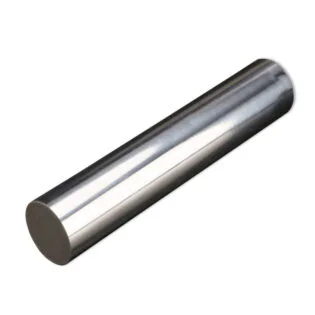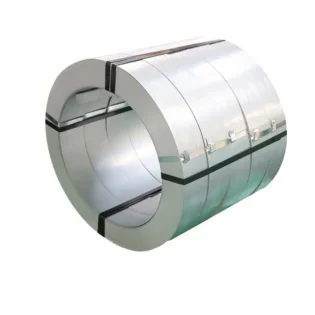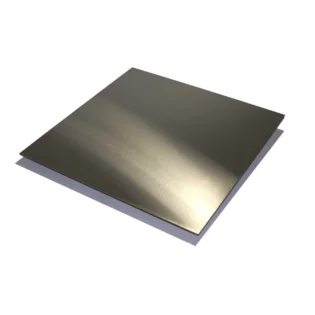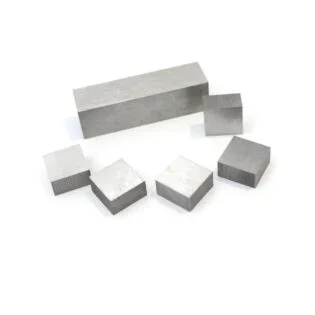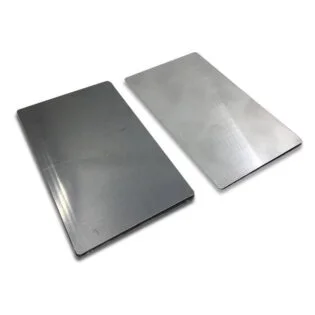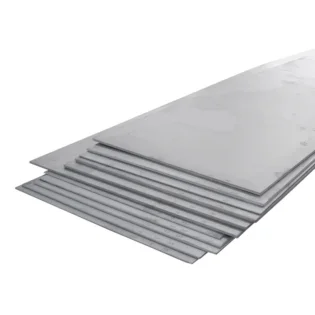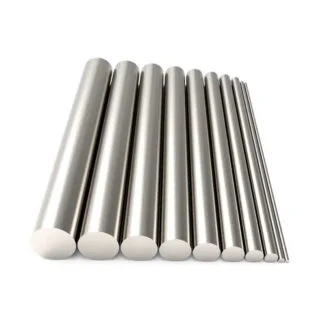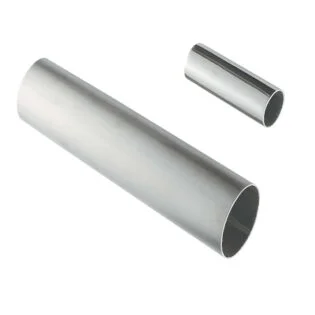듀플렉스 2205 스테인레스 스틸 소개
 The yield strength of 2205 duplex stainless steel is more than twice that of ordinary austenitic stainless steel .This feature enables designers to reduce weight when designing products, making this alloy more cost-effective than 316 and 317L.2205 alloy is particularly suitable for the temperature range of -50°F/+600°F. For applications beyond this temperature range, this alloy can also be considered, but there are some limitations, especially when applied to welded structures.Application Structure Processing Chemical composition Mechanical Properties Advantage Disadvantage
The yield strength of 2205 duplex stainless steel is more than twice that of ordinary austenitic stainless steel .This feature enables designers to reduce weight when designing products, making this alloy more cost-effective than 316 and 317L.2205 alloy is particularly suitable for the temperature range of -50°F/+600°F. For applications beyond this temperature range, this alloy can also be considered, but there are some limitations, especially when applied to welded structures.Application Structure Processing Chemical composition Mechanical Properties Advantage Disadvantage듀플렉스 2205 애플리케이션
- 압력 용기, 고압 저장 탱크, 고압 파이프, 열교환기(화학 처리 산업).
- 오일 및 가스 파이프라인, 열교환기 피팅.
- 하수 처리 시스템.
- 펄프 및 제지 산업 분류기, 표백 장비, 저장 및 처리 시스템.
- 고강도 및 내부식성 환경에서 회전 샤프트, 프레스 롤, 블레이드, 임펠러 등.
- 선박 또는 트럭의 화물 상자
- 식품 가공 장비
기준
- ASTM/ASME……..A240 UNS S32205/S31803
- EURONORM ......1.4462 X2CrNiMoN 22.5.3
- AFNOR………….Z3 CrNi 22.05 AZ
- DIN .......................W. 번호 1.4462
내식성
균일한 부식
크롬 함량(22%), 몰리브덴(3%) 및 질소 함량(0.18%)으로 인해 2205의 내식성은 대부분의 환경에서 316L 및 317L보다 우수합니다.
국부 내식성
2205 듀플렉스 스테인리스강의 크롬, 몰리브덴 및 질소 함량은 산화 및 산성 용액에서 공식 및 틈새 부식에 대한 저항성이 매우 높습니다.
응력 내식성
스테인리스강의 2상 미세 구조는 스테인리스강의 응력 부식 균열 저항성을 개선하는 데 도움이 됩니다. 특정 온도, 변형, 산소 및 염화물이 존재하는 경우 오스테나이트계 스테인리스강은 염화물 응력 부식을 겪게 됩니다. 이러한 조건은 제어하기 쉽지 않기 때문에 304L, 316L 및 317L의 사용이 이와 관련하여 제한됩니다.
부식 방지 피로
2205 듀플렉스강의 고강도 및 내식성으로 인해 부식 피로 강도가 높습니다. 처리 장비는 부식성 환경과 부하 주기에 민감하며 2205의 특성은 이러한 응용 분야에 매우 적합합니다.
듀플렉스 2205 구조
2205의 화학 조성은 1900°/1922°F(1040°/1080°C) 용액 어닐링 처리 후 이상적인 미세 구조 50 α / 50 γ를 얻을 수 있습니다. 열처리 온도가 2000°F보다 높으면 페라이트 조성이 증가할 수 있습니다. 다른 듀플렉스 스테인리스강과 마찬가지로 2205 합금은 금속간 상의 석출에 취약합니다. 금속간 상은 1300°F와 1800°F 사이에서 침전되며 침전 속도는 1600°F에서 가장 빠릅니다. 따라서 금속간 상이 없는지 확인하기 위해 2205를 테스트해야 합니다. 테스트는 ASTM A 923을 참조합니다.
열성형
We recommend that the forming should be done at temperatures below 600°F as much as possible. During the hot forming process, the entire workpiece should be heated as a whole, and should be carried out in the temperature range of 1750°F to 2250°F.Alloy 2205 is very soft at this temperature. If the temperature is too high, 2205 alloy is prone to hot tearing. If it is lower than this temperature, austenite will fracture. Below 1700°F, the intermetallic phase will form quickly due to the influence of temperature and deformation.After the hot forming is completed, it should be solid-solution annealed at a minimum temperature of 1900°F and quenched to restore its phase balance, toughness and corrosion resistance.We do not recommend stress relief, but if you must do so, the material should be solid solution annealed at a minimum temperature of 1900°F, then quickly cooled and water quenched.냉간 성형
2205 합금은 절단 및 냉간 성형이 가능합니다. 그러나 2205 합금 자체의 높은 강도와 경도로 인해 오스테나이트 강보다 더 많은 냉간 성형이 필요합니다. 스프링백이 충분히 고려되어야 하는 것도 강도가 높기 때문입니다.
열처리
Alloy 2205 should be annealed at a minimum temperature of 1900°F, then rapidly cooled and water quenched. This treatment is used for solution annealing and stress relief.If the stress relief treatment is performed at a temperature lower than 1900°F, it is easy to cause the precipitation of harmful metallic or non-metallic phases.가공성
고속 공작 기계에서 2205 합금의 이송 속도와 절삭 속도는 316L과 동일합니다. 탄화 칼을 사용하면 316L에 비해 절단 속도가 약 20% 감소합니다. 여기에서 기계와 구성 요소의 성능이 중요한 역할을 합니다.
용접
The weldability of 2205 alloy is very good. The required performance of 2205 alloy is that the weld metal and thermally deteriorated parts still maintain the same corrosion resistance, strength and toughness as the base metal.The welding of 2205 is not difficult, but the welding procedure needs to be designed so that after welding, it can maintain a good phase balance and avoid the precipitation of harmful metal phases or non-metal phases.2205 can be welded in the following equipment: GTAW (TIG); GMAW (MIG); SMAW (“stick” electrode); SAW; FCW; and PAW특징:
1. 2205 duplex stainless steel alloy as compared with austenitic stainless steel 316L and 317L, 2205 superior performance in resistance to pitting and crevice corrosion aspect, it has a high corrosion resistance, as compared with austenite, it The coefficient of thermal expansion is lower and the thermal conductivity is higher.
2. Compared with austenitic stainless steel, duplex stainless steel 2205 alloy has twice its compressive strength. Compared with 316L and 317L, the designer can reduce its weight. Alloy 2205 is especially suitable for the temperature range of -50°F/+600°F. Under strict restrictions (especially for welded structures), it can also be used at lower temperatures.이중 2205 화학 성분
Performance supplement: main component: 22Cr-5.3Ni-3.2Mo-0.16N; national standards: NAS 329J3L, UNS S32205/S31803, DIN/EN 1.4462, ASTM A240, ASME SA-240; mechanical properties: tensile strength: σb≥ 640Mpa; Elongation: δ≥25%; Typical working conditions: 20% dilute sulfuric acid, below 60℃, annual corrosion rate <0.1mm; Matching welding wire: ER2209.1. Chemical composition (JIS G 4305-005) (wt%)| 화학적 구성 요소 | 씨 | 그리고 | 미네소타 | NS | NS | 크롬 | Ni | 모 | N |
| 기준 | ≤0.03 | ≤1.00 | ≤2.00 | ≤0.04 | ≤0.03 | 21.0~24.0 | 4.5~6.5 | 2.5~3.5 | 0.08~0.2 |
| 일반적인 | 0.025 | 0.6 | 1.5 | 0.026 | 0.001 | 22.5 | 5.8 | 3.0 | 0.16 |
2. 성능(JIS G 4305-2005)
| 구별하다 | 기계적 성질 | 비고 | | |
| Ys (Mpa) | TS(MPA) | (%) | Hv | 2.0t/2B |
| ≥450 | ≥620 | ≥25% | ≥18 | ≤ 320 |
| 500 | 670 | 35% | 27 | 280 |
3. 물성
| 밀도(g/cm) | 자기 | 비열(J/gC) | 열전도율100C(W/m. | 열팽창율20~100C(10/C) |
| 7.8 | 가지다 | 0.45 | 19.0 | 13.7 |
듀플렉스 2205 기계적 성질
| 2205 듀플렉스 스테인리스강의 실온 기계적 성질 |
| 강철 등급 | 제품 상세 사항 | 인장 강도 | 항복 강도 | 연장 | |
| MPa | MPa | % | |
| 00Cr22Ni5Mo3N | Φ20mm, 바 | ≥680 | ≥450 | ≥25 | |
| SAF 2205 | 벽 두께 ≤20mm, 파이프 | 680/880 | >450 | >25 | |
| 블랭크 두께 ≤200mm, 단조 | 680/880 | >410 | >25 [1] | |
2205 듀플렉스 스테인리스강의 고온 기계적 성질
|
| 강철 등급 | 제품 상세 사항 | 인장 강도 | 항복 강도 | 연장 | 온도 |
| MPa | MPa | % | °C |
| 00Cr22Ni5Mo3NSAF 2205 | Φ20mm, 바 | 710 | 470 | 37 | 100 |
| 680 | 393 | 32 | 200 |
| 650 | 380 | 30 | 300 |
| | | | |
| 벽 두께 ≤20mm, 파이프 | >630 | >370 | | 100 |
| >580 | >330 | | 200 |
| >560 | >310 | | 300 |
| | | | |
| 블랭크 두께 ≤200mm, 단조 | >630 | >365 | | 100 |
| >580 | >315 | | 200 |
| >560 | >285 | | 300 |
듀플렉스 2205 스틸 장점
- 2205 stainless steel plate, 2205 stainless steel, duplex stainless steel 2205, 2205 stainless steel materials, are Swedish stainless steel grades.
The difference between duplex 2205 stainless steel plate and austenitic 304 stainless steel plate
- The yield strength is more than twice that of ordinary austenitic stainless steel, and it has the necessary requirements for forming
Sufficient plasticity. The wall thickness of storage tanks or pressure vessels made of duplex stainless steel is 30-50% less than that of commonly used austenite, which is beneficial to reduce costs.
- 응력 부식 균열에 대한 저항성이 우수합니다. 합금 함량이 가장 낮은 듀플렉스 스테인리스강도 특히 염화물 이온이 포함된 환경에서 오스테나이트계 스테인리스강보다 응력 부식 균열에 대한 저항성이 더 높습니다. 응력 부식은 일반 오스테나이트 스테인리스강에서 해결하기 어려운 두드러진 문제입니다.
- 많은 매체에 가장 일반적으로 사용되는 2205 듀플렉스 스테인리스강의 내식성은 일반 316L 오스테나이트계 스테인리스강보다 우수하며 슈퍼 듀플렉스 스테인리스강은 내식성이 매우 높습니다. 아세트산 및 포름산과 같은 일부 매질에서는 고합금 오스테나이트계 스테인리스강과 내부식성 합금을 대체할 수도 있습니다.
- 국부 내식성이 우수합니다. 합금 함량이 동일한 오스테나이트계 스테인리스강과 비교할 때 내마모성 및 피로 내식성이 오스테나이트계 스테인리스강보다 우수합니다.
- 선팽창 계수는 탄소강에 가까운 오스테나이트계 스테인리스강보다 낮습니다. 탄소강과의 연결에 적합하며 복합 플레이트 또는 라이닝 생산과 같은 중요한 공학적 의미가 있습니다.
- 동적 또는 정적 하중 조건에서 오스테나이트계 스테인리스강보다 높은 에너지 흡수 용량을 갖습니다. 충돌, 폭발 등 갑작스러운 사고에 대처하기 위한 구조용 부품입니다. 듀플렉스 스테인리스 스틸은 명백한 장점이 있으며 실용적인 적용 가치가 있습니다.
듀플렉스 2205 스테인레스 스틸 단점
오스테나이트계 스테인리스강과 비교하여 듀플렉스 스테인리스강의 단점은 다음과 같습니다.
- 응용 프로그램의 보편성과 다양성은 오스테나이트계 스테인리스강만큼 좋지 않습니다. 예를 들어 서비스 온도는 섭씨 250도 이하로 제어되어야 합니다.
- 소성 인성은 오스테나이트계 스테인리스강보다 낮고 냉간 및 열간 가공 기술과 성형 성능은 오스테나이트계 스테인리스강만큼 좋지 않습니다.
- 중간 온도의 취성 영역이 있으며 열처리 및 용접 공정 시스템은 유해한 상 및 손상 성능의 출현을 피하기 위해 엄격하게 제어되어야 합니다.
듀플렉스 2205 스테인리스 강판과 페라이트계 410 스테인리스 강판의 차이점: 포괄적인 기계적 특성은 페라이트계 스테인리스 강, 특히 플라스틱 인성보다 우수하며 페라이트계 스테인리스 강만큼 취성에 민감하지 않습니다.
- 응력 내식성을 제외하고 다른 국부 내식성은 페라이트계 스테인리스보다 우수합니다.
- 냉간 가공 공정 성능과 냉간 성형 성능은 페라이트계 스테인리스강보다 훨씬 우수합니다.
- 용접 성능도 페라이트계 스테인리스강보다 훨씬 우수합니다. 일반적으로 용접 전 예열이 필요 없고 용접 후 열처리가 필요하지 않습니다.
- 적용 범위는 페라이트계 스테인리스강보다 넓습니다. 페라이트계 스테인리스강과 비교할 때 듀플렉스 스테인리스강의 단점은 다음과 같습니다. 합금 원소의 함량이 높고 가격이 상대적으로 높습니다. 일반적으로 페라이트에는 니켈이 포함되어 있지 않습니다.
 The yield strength of 2205 duplex stainless steel is more than twice that of ordinary austenitic stainless steel .This feature enables designers to reduce weight when designing products, making this alloy more cost-effective than 316 and 317L.2205 alloy is particularly suitable for the temperature range of -50°F/+600°F. For applications beyond this temperature range, this alloy can also be considered, but there are some limitations, especially when applied to welded structures.Application Structure Processing Chemical composition Mechanical Properties Advantage Disadvantage
The yield strength of 2205 duplex stainless steel is more than twice that of ordinary austenitic stainless steel .This feature enables designers to reduce weight when designing products, making this alloy more cost-effective than 316 and 317L.2205 alloy is particularly suitable for the temperature range of -50°F/+600°F. For applications beyond this temperature range, this alloy can also be considered, but there are some limitations, especially when applied to welded structures.Application Structure Processing Chemical composition Mechanical Properties Advantage Disadvantage
